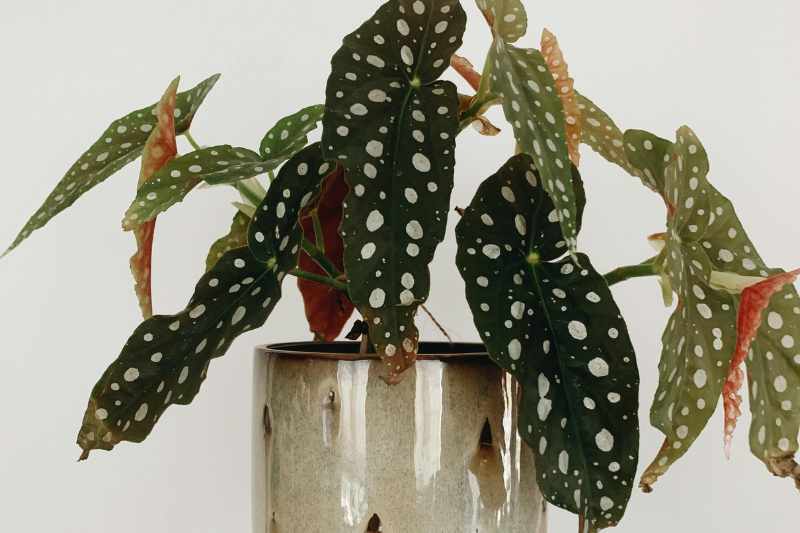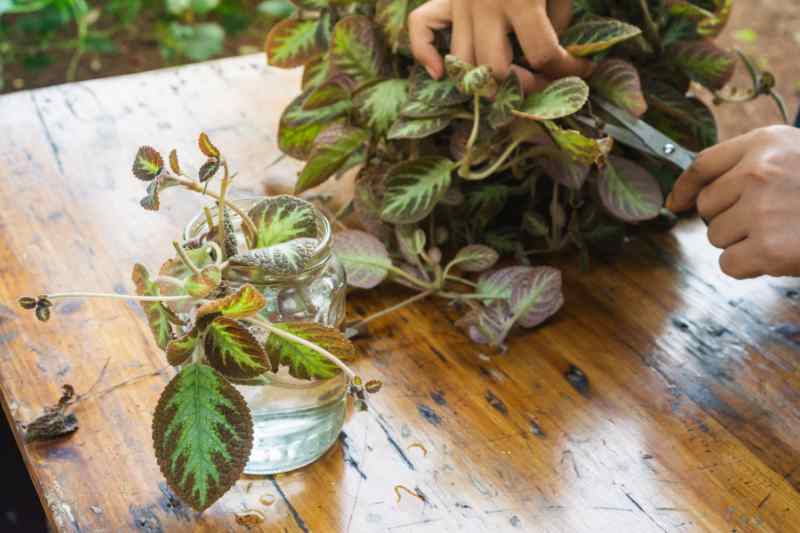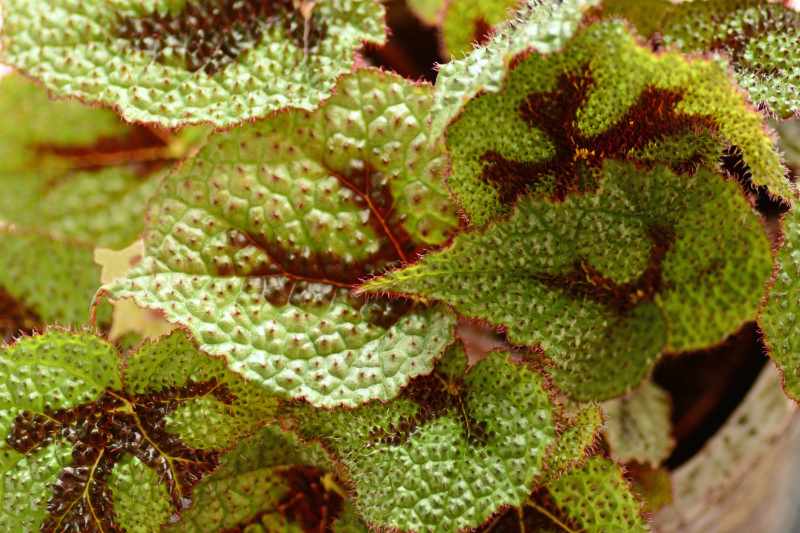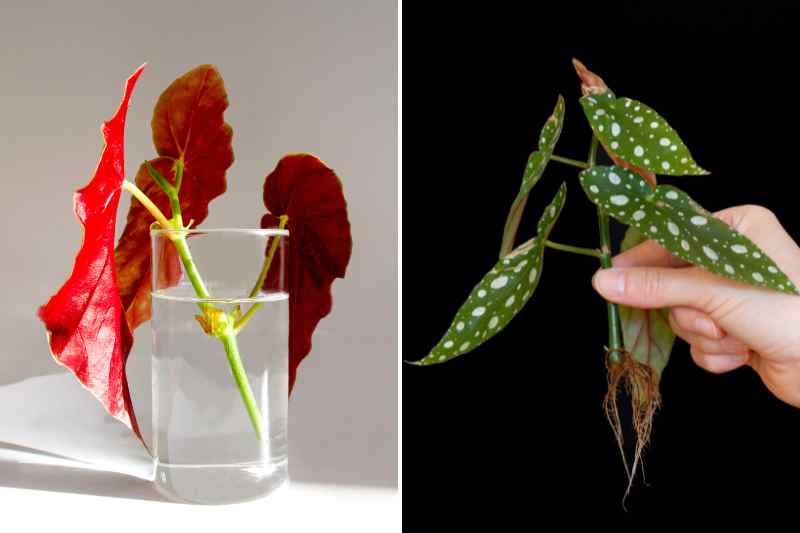Indoor begonias are among the most decorative plants thanks to their unique foliage and elegant habit, such as Begonia maculata, or the maculate begonia, with its silver spots on a dark green background and red undersides. These plants thrive in filtered light, a light and well-draining substrate, high ambient humidity, and stable temperatures between 16 and 22 °C.
Propagation by cuttings of begonias is an ideal method to multiply them at a low cost, preserve your favourite varieties, or share them. Here’s how to proceed, step by step, to propagate an indoor begonia.

When to propagate an indoor begonia?
The best time to propagate indoor begonias is between April and September. The warmth and brightness support root development, and the mother plant is in full vigour. During this period, the stems and leaves are well-developed, which promotes rapid rooting. An ambient temperature above 18 °C is ideal, as is good light without direct sunlight. Avoid winter, as the plant goes dormant and the cuttings may rot or stagnate without producing roots.

How to propagate indoor begonias?
Propagation by cuttings of begonias is mainly done by leaf or stem, depending on the varieties. Here are the two simplest and most effective methods:
Necessary materials
- One or more pots or buckets
- Pruning shears that are clean and disinfected
- A cloche, a plastic bag, or a mini greenhouse to cover the cuttings
- Some seed and repotting compost
- Optional: a rooting hormone
Leaf propagation of Begonia (recommended for rhizomatous begonias like Begonia rex or masoniana)
This method involves using an entire or cut leaf to produce new seedlings from the veins. Here’s how to propagate a begonia in soil:
- Take a healthy, well-formed leaf without spots, along with its petiole.
- Cut it into several sections (triangular or diamond-shaped), ensuring that each piece retains a main vein.
- Lay the pieces flat or slightly buried in a light, moist substrate.
- Place everything under a mini greenhouse or transparent plastic to maintain high humidity.
- Keep at 20–22 °C with filtered light.
- Ventilate the mini greenhouse or lift the plastic every two to three days for a few minutes to avoid excessive condensation and prevent mould.
- Small seedlings will appear in 3 to 6 weeks at the base of the veins. Once they reach a few centimetres, you can carefully repot them.

Stem propagation (ideal for Begonia maculata, amphioxus, cucullata)
Simple and quick, this method uses a stem segment with one or two leaves.
- Take a healthy stem about 8 to 10 cm long, just below a node.
- Remove the lower leaves, leaving only 2 terminal leaves.
- Plant the stem in a small pot of slightly moist, well-draining substrate.
- Lightly firm it down and cover with a transparent cloche or plastic bag to create a humid atmosphere.
- Place in light without direct sunlight, at about 21 °C.
- Remember to ventilate briefly every two to three days to refresh the air, remove excess moisture, and prevent fungal diseases.
- Rooting usually takes 3 to 4 weeks. You can test the rooting by gently pulling on the stem: if it resists, it is ready to be repotted.

Begonia cutting in water
You can also place the base of the stem in a glass of clean water, ensuring to change the water every 3 to 4 days to avoid mould. As soon as the roots reach 3 to 4 cm, repot the cutting in a light substrate.

Care for indoor begonia cuttings
Once the begonia cuttings are repotted in their final pot, it is important to provide them with stable and suitable conditions to promote their lasting rooting and growth.
- Keep the substrate slightly moist, without excess. Water moderately as soon as the surface of the compost begins to dry, always with non-calcareous water at room temperature.
- Place the young plants in a bright location, but without direct sunlight. Soft light promotes growth without the risk of burning.
- Maintain a temperature between 18 and 22 °C, away from drafts and temperature fluctuations.
- Avoid fertilising immediately: wait about 4 to 6 weeks before applying a mild fertiliser, once the recovery is well underway.
- Monitor the condition of the leaves and the base of the stems: excess water or insufficient light can cause yellowing or rot.
































Comments